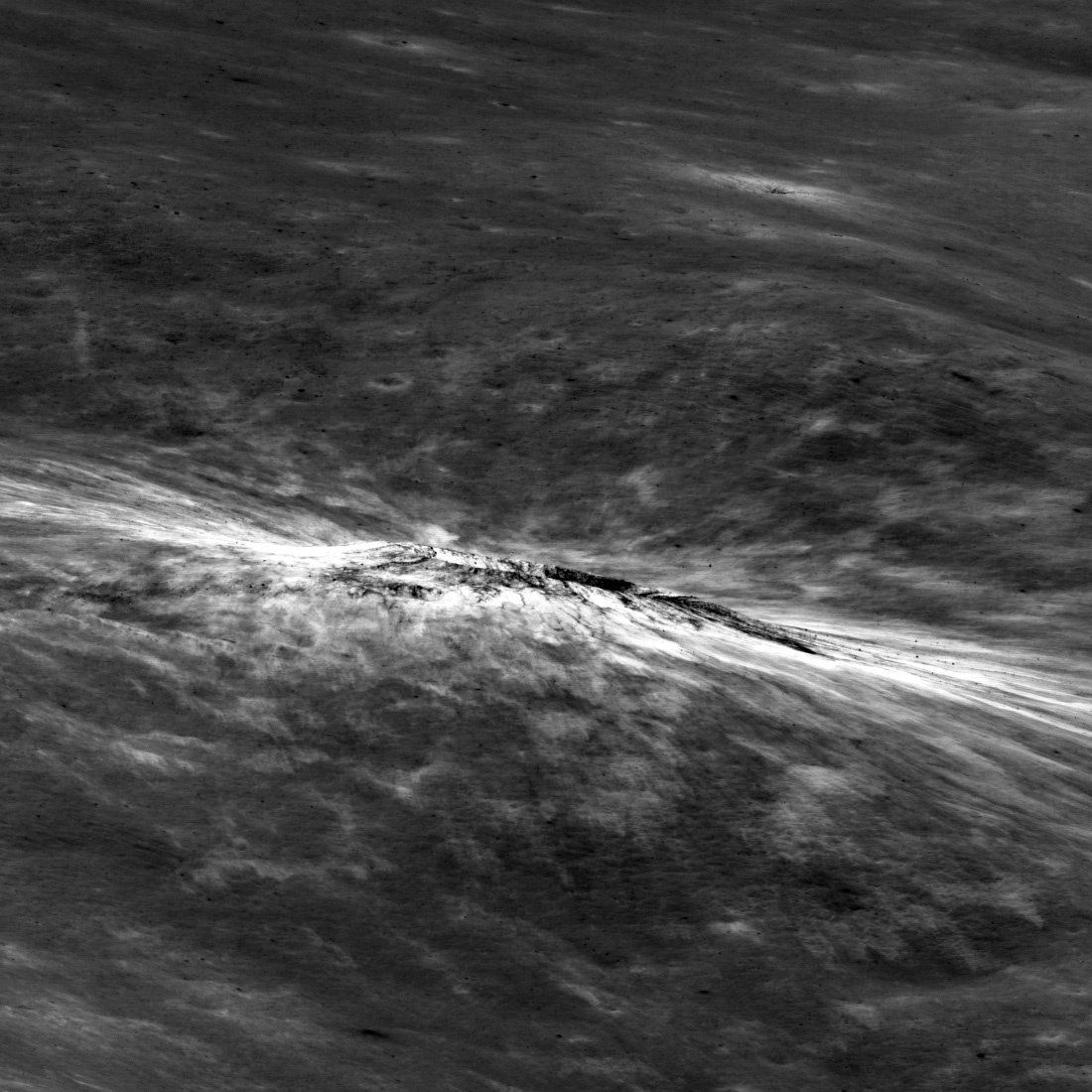Cold Spot Crater

| Credit | NASA/GSFC/Arizona State University |
|---|---|
| Language |
|
Oblique (very!) view of a crater on the far side of the Moon, as imaged by NASA's Lunar Reconnaissance Orbiter (LRO). Known as the Einthoven cold spot crater, it is located at 109.91° E, 6.74° S. White rays and the crater's rocky rim and rugged interior wall are visible signs of youth. A "cold spot anomaly" surrounding the crater is another sign of youth. The anomaly extends far beyond the three-kilometer width of this image, but is invisible to human eyes.
The LRO spacecraft explores the Moon using seven scientific instruments, including the LRO Camera (LROC) package, which obtained this image. The seven instruments collect different kinds of scientific data. Combining their data sets allows scientists to make discoveries they never could if they were limited to a single lunar-orbiting instrument.
Since 2009, the heat-sensing Diviner Lunar Radiometer Experiment on LRO has systematically mapped the Moon's surface temperatures, enabling reseachers to chart more than 2200 anomalous cold spots between 50° N and 50° S latitude. The cold spot anomalies appear after the Sun goes down.
The Diviner instrument sees the cold spots as irregular splotches that rapidly radiate heat after sunset until they are up to 10° Fahrenheit colder than the surrounding landscape. LROC, observing in the visible part of the spectrum, sees nothing unusual at cold spot locations. When the Sun rises, the spots rapidly warm to the temperature of their surroundings and blend in with the background.
What causes cold spot anomalies? In most cases, Diviner data are of too low a resolution to confirm a source. When Diviner data are overlaid on higher-resolution LROC images, however, researchers find that almost all occur around impact craters that are young (less than one million years) and small (from 43 meters to 2300 meters across).
We know the craters are young because they have very rocky floors and rims and are surrounded by bright rays. The steady infall of debris from space has not yet had time to chip away these signs of youth. This leads researchers to conclude that a process related to the formation of small craters creates the cold spot anomalies. But what process?
Einthoven cold spot crater is 1143 m wide, or about the size of Meteor Crater in Arizona. So far, it has no official name — we call it Einthoven cold spot crater because it is just south of Einthoven crater, which is old, degraded, and, at 69 kilometers in diameter, the largest crater in the neighborhood.
Though craters associated with cold spot anomalies are small, the cold spots themselves are often large. The Einthoven cold spot crater anomaly takes in 2070 square kilometers of terrain and extends up to 50 kilometers from the crater. That's much too large an area for ejecta from the crater to cover, which eliminates the most obvious cold spot formation hypothesis: that material blasted from the crater during its formation could create the cold spot.
So, how to explain the cold spot anomalies? Some researchers invoke a cascading series of tiny secondary impacts traveling outward from the crater-forming asteroid impact, while others believe that gas produced by the impact flows through the top layer of lunar surface material. Either process might "fluff up" the surface, changing the way heat affects it. Few researchers, however, find these explanations to be 100% convincing.

